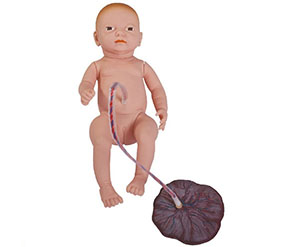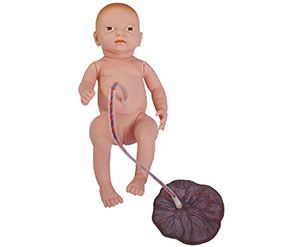Neonatal umbilical cord care model, Is it really necessary? This is an issue that deserves further discussion, especially in the field of medical education and clinical skills training.
First, we need to recognize the importance of neonatal umbilical cord care. The umbilical cord is the link between the fetus and the mother, and proper care of the umbilical cord after birth is essential to prevent infection in the newborn, promote natural shedding of the umbilical cord stump, and safeguard the health of the newborn. However, it is not easy for medical staff to master the correct umbilical cord care skills, which requires systematic learning and practice.

The emergence of neonatal umbilical cord nursing model provides a safe and effective learning platform for medical staff. Such models are usually made of high-quality simulation materials and are able to simulate the structure and physiological characteristics of the umbilical cord of a real newborn. Through the simulation operation, the medical staff can be familiar with the anatomy of the umbilical cord and master the correct disinfection, bandaging and nursing skills. This practical learning method is more intuitive and effective than pure theoretical learning, and can help medical staff to master umbilical cord care skills faster.
In addition, it has the characteristics of reuse. This means that healthcare professionals can practice over and over again in different time periods until they become proficient in cord care techniques. This flexibility and convenience provides more learning opportunities for healthcare professionals, helping to improve their operational skills and clinical coping abilities.
Of course, one might question the need for such a model. After all, a real clinical setting is the best place to test the skills of health care workers. However, we cannot ignore that real clinical Settings often come with risks and uncertainties. For novice health care workers, lack of experience and skills can lead to errors and even harm to newborns. It provides a safe, low-risk learning environment where healthcare professionals can practice and learn without harming patients.
To sum up, it has important value in medical education and clinical skills training. It will not only help health care professionals master the correct umbilical cord care techniques, improve their operational skills and clinical coping abilities, but also provide a safe, low-risk learning environment for new health care professionals.

